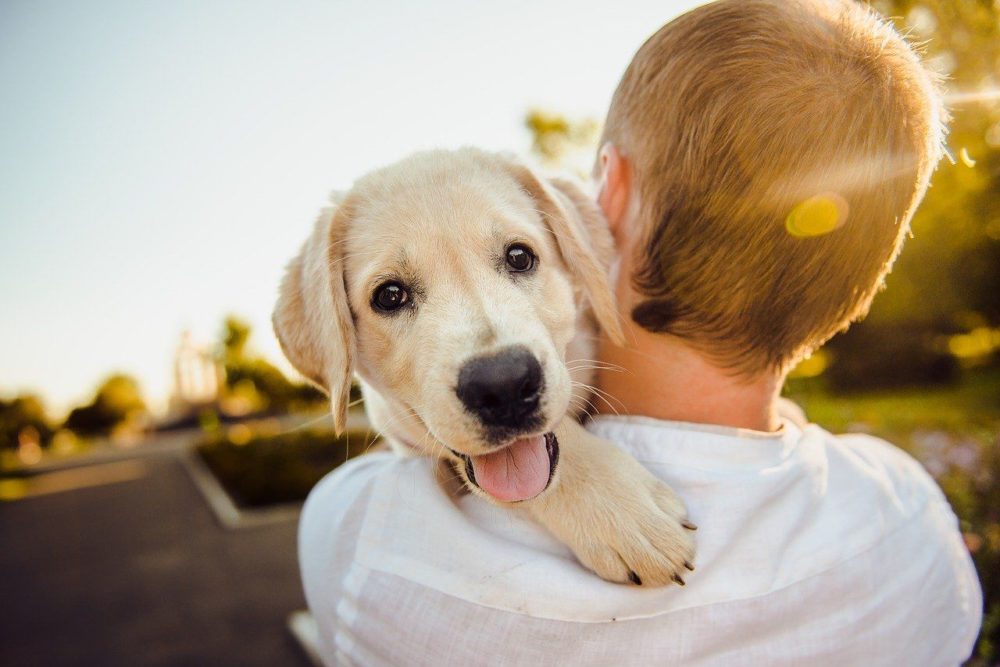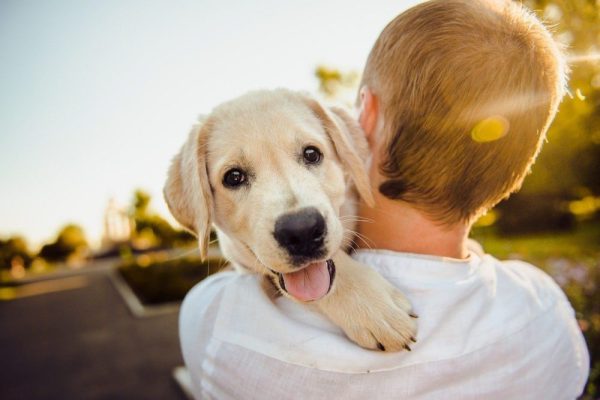Click to Skip Ahead
Whether you’ve brought home your first dog or your tenth, ensuring you take proper care of her is a huge responsibility. She’ll be an integral part of your family for up to 15 years or even longer!
You want your pup to be healthy and happy and be with you for as long as possible, so you must meet her essential requirements. The first step is to understand everything necessary to take care of your dog, so we’ve given you the following points that are the cornerstones for fulfilling your dog’s basic needs.
Feeding Your Dog
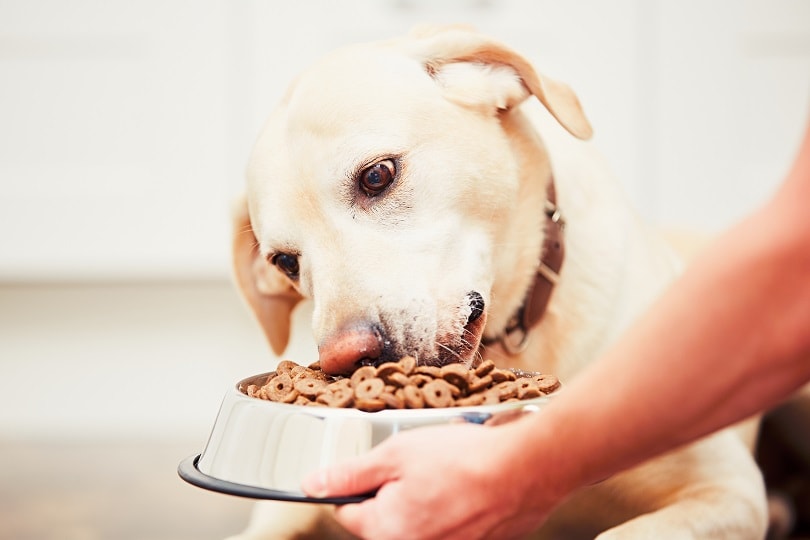
The first and probably the most obvious part of caring for a dog is providing her with food and water.
1. Food
High-quality dog food is one of the most important purchases you can ever make for your dog. Read reviews, research, and find a food that not only offers a nutritious and balanced diet for your dog but contains the right ingredients.
For example, you should find meat listed as the first ingredient rather than grains or a meat by-product, as it will provide the best kind of healthy protein.
If you decide to cook homemade meals for your dog, only do so after consulting with your vet so you know you’ll be giving her a nutritionally balanced meal. Don’t solely rely on what you read online, as what works for one dog won’t necessarily work for yours—not every dog is the same and has the same dietary needs.
Introduce any new food slowly, keep an eye on your dog, and note any changes in health or appearance.
2. Food Schedule
How frequently and how much you feed your dog are also important factors. The following are the general guidelines for how often they should be fed according to age:
- 8 to 10 weeks – 4 meals per day
- 3 to 6 months – 3 meals per day
- 6 months to 1 year – 2 meals per day
- 1 year and up – 1 meal per day
However, some dogs, particularly large breeds, would do better with two meals daily as adults. It’s best to create a regular schedule—always pick the same time of day to feed your dog, and remember that most dogs will need to relieve themselves about 20 to 30 minutes after eating.
3. Water
This might seem like an obvious suggestion, but it’s such a vital part of taking care of a dog. Water is actually even more important than food, but of course, dogs need both. Dehydration is a serious condition that can occur if a dog doesn’t always have access to water, leading to death if not remedied.
Always ensure your dog has fresh and clean water, and consider bringing a travel bowl if you take your dog out for long hikes or runs.
4. Treats
You need to be quite careful about giving your dog too many treats or bites of people food. Your best bet is only to give your dog treats made for training purposes and double-check with your vet about giving your pup people food.
Some kinds of food are safe, but many others are not, as they can contribute to obesity as well as health problems.
Veterinary Care for Your Dog
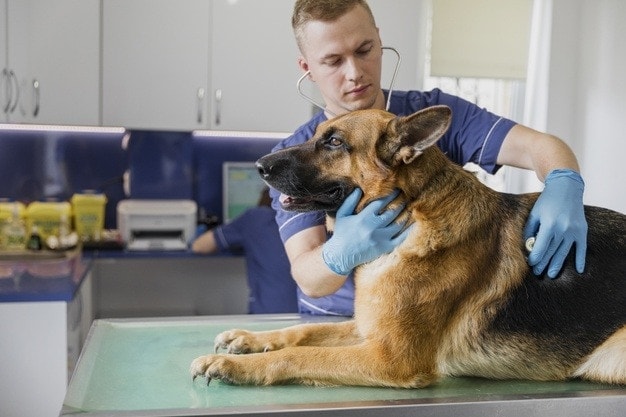
Finding an excellent veterinarian is an absolutely essential part of taking care of a dog. The vet will care for your dog throughout his life and ensure he remains in good health.
Before settling on a vet, you can interview them to ensure they will be a good fit for you and your dog. Also, double-check reviews online.
5. Vaccinations
Most states and cities have a law regarding dogs receiving the rabies vaccine. You’ll need to check with your vet regarding the regulations in your area. Several vaccines are administered yearly, and a few are administered every three years. Regularly vaccinating your dog will ensure his health and protection against serious diseases.
6. Annual Check-Up
The annual exam usually includes checking your dog’s teeth, updating vaccinations, and completing a physical exam. This can also allow you to talk to your vet if you have any concerns about your dog’s behavior, health, and training.
7. Spaying and Neutering
Neutering the male and spaying the female dog usually occurs by 6 months of age. Not only does this procedure help prevent unwanted pregnancies, which contributes to pet homelessness, but it can prevent serious future health conditions.
Additionally, neutering and spaying can help stop unwanted behaviors, such as dogs that wander or run away, as well as aggressive behavior.
8. Microchipping
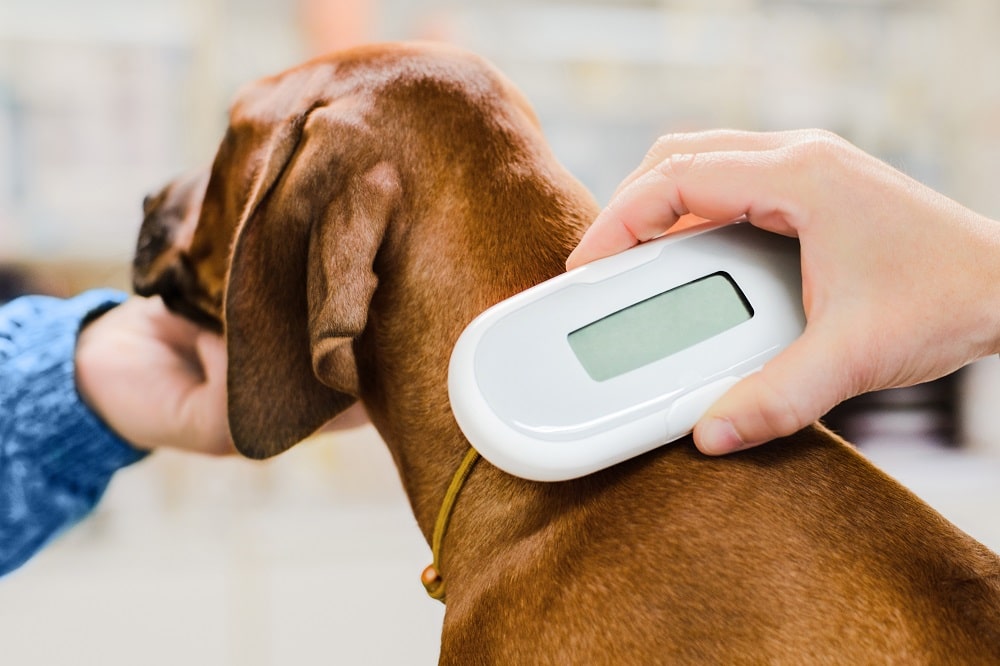
Getting your dog microchipped in your dog is a great way to have peace of mind if your dog ever becomes lost. They are about the size of a rather large grain of rice and work as a way to identify your pet through radio frequency.
It’s injected under the skin between your dog’s shoulder blades and is quite painless. If your dog is stolen, runs away, or is lost and brought into a vet clinic or shelter/rescue group, they will scan your dog with a microchip reader, which will have your information available so your dog can be returned to you.
9. Parasites
One unfortunate side effect of owning a dog is the pests and parasites that love to latch onto them when they have the chance—fleas, ticks, roundworms, heartworms, etc. These treatments are particularly important if you live or walk your dog in the countryside and will require treatment at least once a year.
10. Medication
Some dogs need special medication for certain health conditions, such as diabetes or allergies. Depending on the situation, you’ll need to provide your dog with antibiotics, antifungals, or pain relievers. Be sure to get these medications only from your vet.
11. Health Insurance
This isn’t necessary for all dogs, but it could prove beneficial for you, particularly if your dog has a health condition. You’ll be required to pay a monthly premium, but the insurance should cover most of the cost if your dog is hospitalized through illness or injury. Shop around until you find the insurance company that’s right for you. One company to look at is Lemonade, which offers balanced, customizable pet insurance and responsive customer service.
Grooming Your Dog
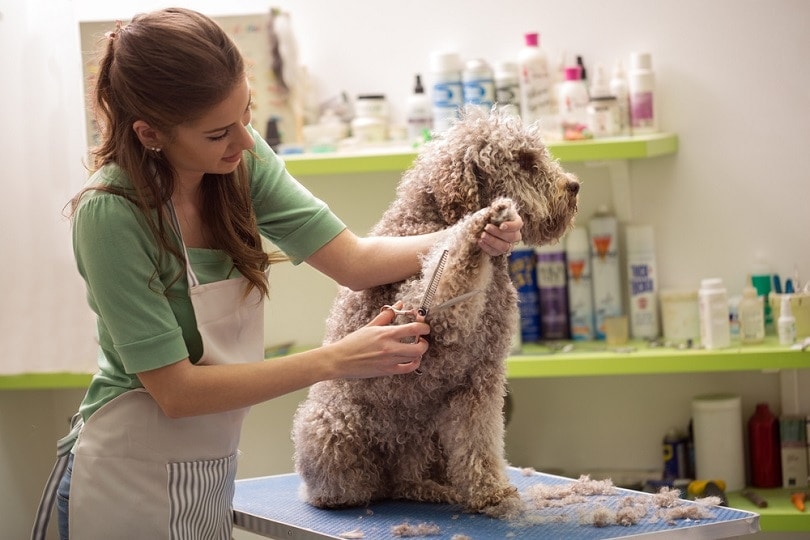
Grooming will depend on the kind of dog and its coat. No matter how easy it might seem to groom your dog, there will always be aspects you’ll need to look after, specifically trimming the nails. Ensuring your dog remains mat-free is super important, as mats in your dog’s coat pull on the skin and can be quite painful.
12. Brushing
Clearly, this will depend on your dog’s coat. Some dogs have short but double coats, such as the Husky, to help them in cold weather, so they require extra brushing, particularly when they shed (every spring and fall is shedding season).
Others have short, smooth coats, such as hound dogs like the Beagle, that tend to shed like crazy and require weekly brushings.
And then you have the dogs with long, thick coats that need lots of brushing and regular trimming. The Bichon Frise has hair instead of fur, which means the hair doesn’t stop growing and should be brushed at least several times a week and trimmed monthly.
Research the dog you’re interested in before you commit to one, as grooming can be easy or very high-maintenance, depending on the breed.
13. Bath
Most dogs should be bathed (and only with a dog shampoo) about every 4 to 6 weeks or only when necessary. Again, some breeds need more frequent baths, including hairless breeds like the Chinese Crested, which need a bath every week.
Then there are dogs like the Basenji, which groom themselves (great dog to have if you’re also a cat lover) that rarely need a bath.
Our Favorite Products Selecting the right shampoo and conditioner makes the world of a difference when grooming your pup. Our favorite products are the duo by Hepper. The Oatmeal Pet Shampoo is formulated with aloe and oatmeal to soothe skin and hydrate the coat. The Pet Conditioner works at eliminating tangles and taming frizz and static. Both products are pH-balanced and formulated with pet-friendly ingredients, free of harsh soaps, chemicals, and dyes. Give this duo a try to heal and nourish your dog's coat, and leave them with an irresistible just-left-the-spa cucumber and aloe scent.
At Dogster, we’ve admired Hepper for many years and decided to take a controlling ownership interest so that we could benefit from the outstanding designs of this cool pet company!
14. Monthly Maintenance
Nail trimming, ear cleaning, and brushing teeth. These are all regular parts of weekly and monthly maintenance that you need to perform on your dog.
Cleaning the ears helps you to keep an eye out for infections as well as parasites. Brushing their teeth will help dogs the same way it helps you. Dental issues can lead to gingivitis and could eventually lead to heart disease.
A dog’s nails will grow continuously and eventually grow into their pads, making it difficult for them to walk and stand. White/translucent nails are the easiest to trim as you can usually see the quick.
Exercising and Training
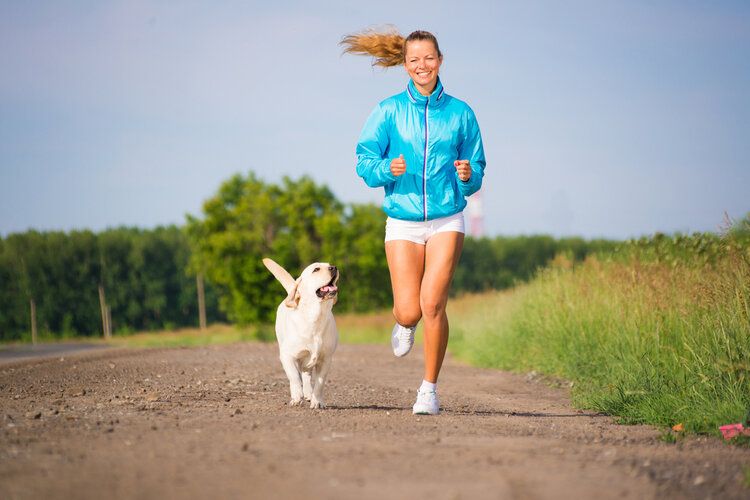
Exercising and training your dog are essential to caring for your dog. Exercising helps keep your dog healthy, makes him happy, and holds less pent-up energy. Training is vital for your own sanity.
15. Exercising
The amount of exercise a dog gets depends on the breed. High-energy dogs, like the Border Collie, need a lot of walking, running, and opportunities to play, whereas many of the small breeds, like the French Bulldog, require short walks and little exercise.
You do need to ensure your dog gets enough time to expend his energy, or he might start to exhibit destructive behaviors.
16. Picking up the Poop
Part of owning a dog includes picking up his poop. It’s not fun, but it’s absolutely necessary. Even if it’s in your backyard, poop should be cleaned up as it’s actually a dangerous substance.
It can kill the grass, and it carries the fatal Parvo disease, which is highly contagious among dogs but can also carry serious diseases and parasites transmitted to humans.
17. Training
Training your dog is pretty much important for everyone you encounter. Dogs need consistency and structure, and they need to be able to function appropriately within our society. This is for their own safety as well as your own. For example, if your dog runs off on you, you need to be able to call him back before he runs onto the road.
Again, how you train your dog will depend on the breed. All dogs respond best to positive reinforcement. Some are treat motivated while others love to be put to work and become bored with training if you don’t make it enjoyable. Some breeds need repetition, while others need to be interested and won’t respond well to repetition.
18. Socializing
Dogs must be socialized when they are young, even when they are just a few weeks old. Introduce your dog to as many people, smells, sounds, and places as possible so he will become used to different situations. This will make for a well-adjusted dog that won’t be fearful, shy, or aggressive when encountering something new.
19. Dog License and Tags
Most cities and states in North America require dogs to be registered and to wear a tag on their collar at all times. Check with your vet or local shelter regarding registering your dog.
Ensure the Happiness of Your Dog
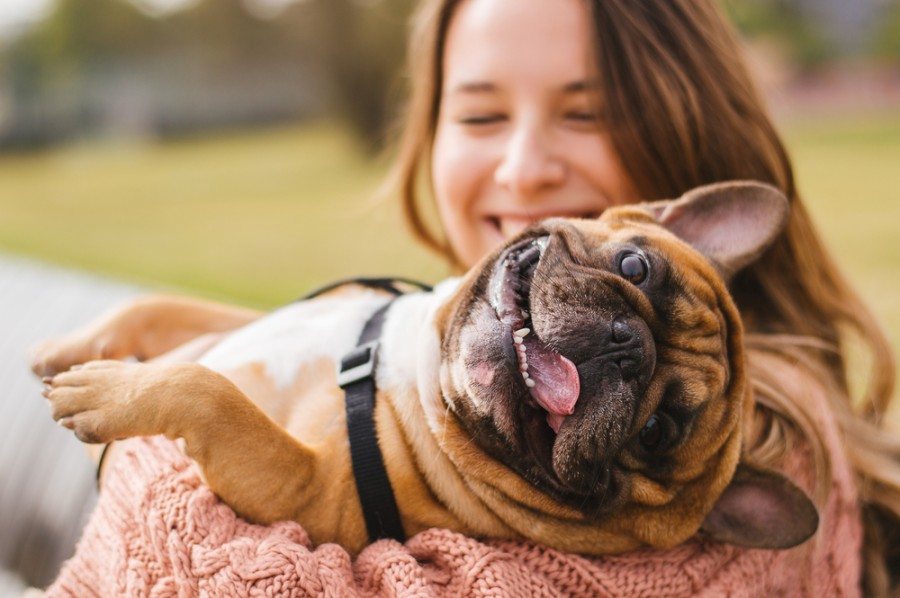
Lastly, but just as important as all of the other tips, providing your dog with shelter, love, and attention is vital for any animal. Respect goes both ways.
20. Housing and shelter
Most dogs belong inside with you and should not be chained up outside most of the time. You should have a quiet and warm place available to your dog so he can rest comfortably in a stress-free environment.
Some dog owners prefer to use a crate when they are out of the house, and it can be a safe shelter that your dog will voluntarily go into as his safe space.
21. Lots of Love
Our dogs love us unconditionally and should be treated with respect, love, and affection. If your dog misbehaves, don’t yell and certainly don’t hit him as he won’t understand what he did wrong, and you’re only teaching him to fear you.
Here’s also a great article from Pango Pets on how to make your dog happy.
Conclusion
Be sure to research and read up on the breed of dog you have or are interested in. The more you know about the breed and the more knowledge you have about taking care of your dog, the more confident you’ll be so you can give your dog a safe and happy place to live.
Taking care of a dog will be an incredibly rewarding experience as he will be a loving and constant companion. Be prepared to spend lots of time, money, and emotional investment on your dog. But it’s so worth it!
Feature Image Credit: Helena Sushitskaya, Pixabay

